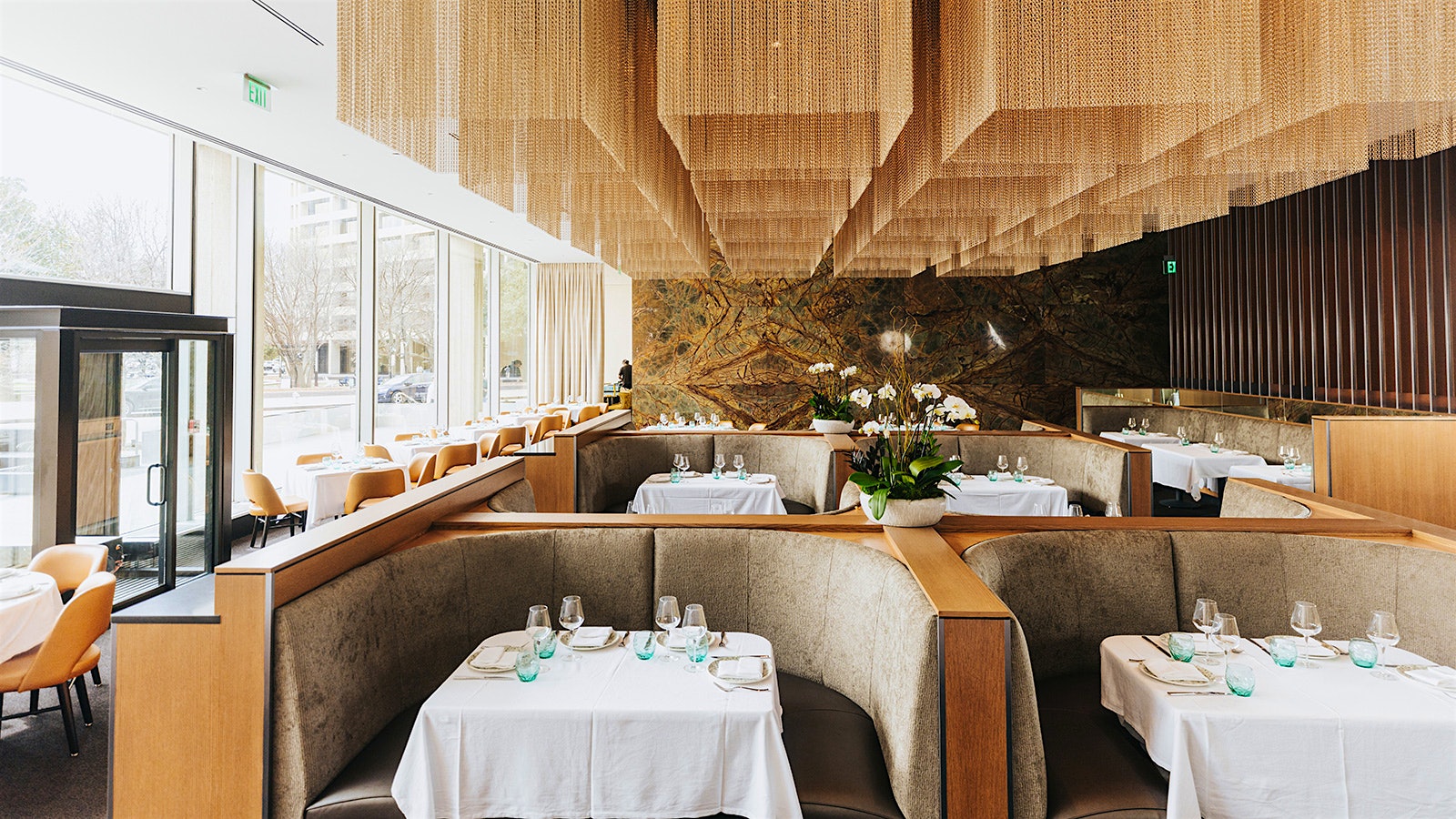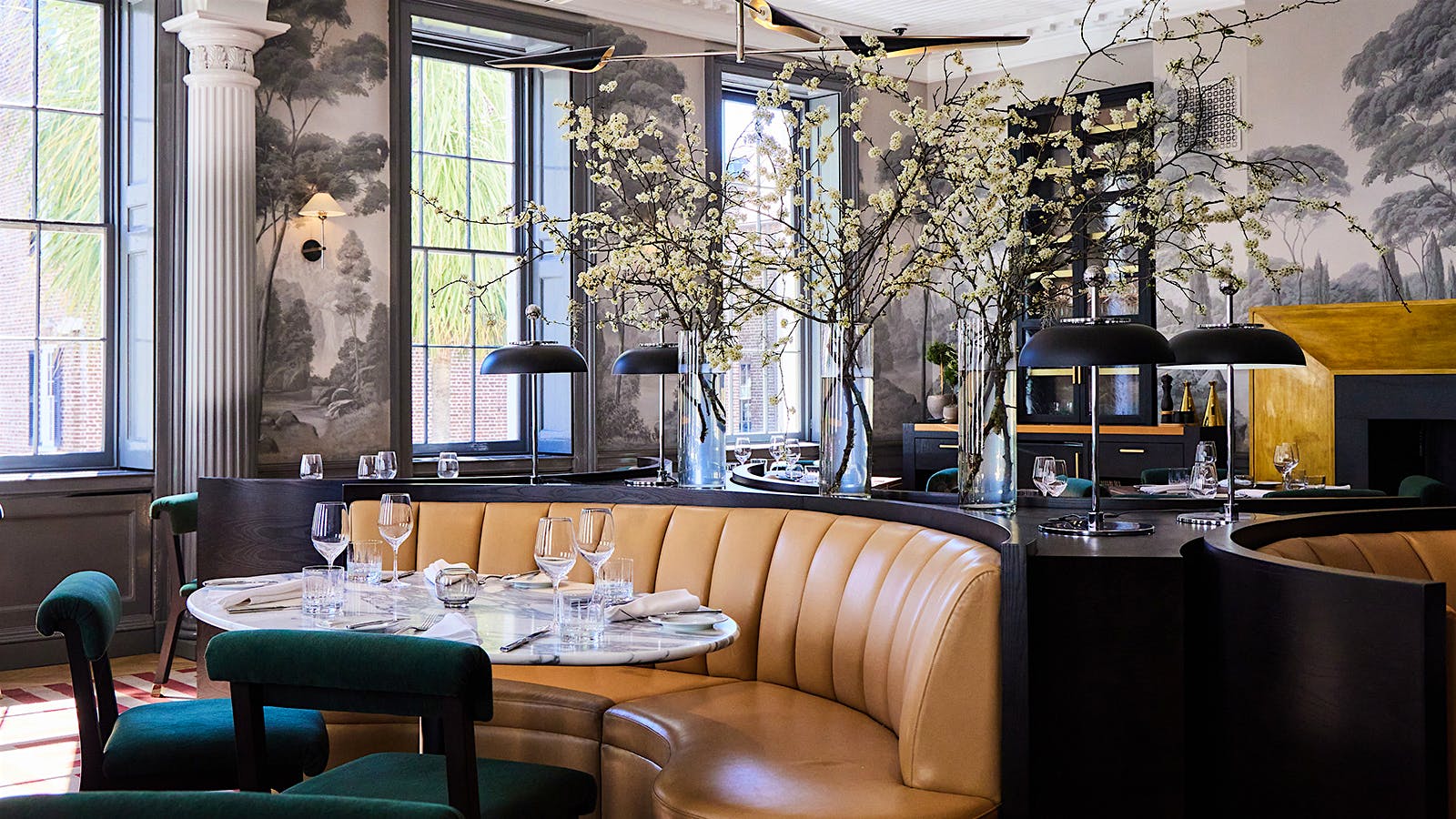Products You May Like
Michael Mina has had a busy year so far. Fresh from revamping his Wine Spectator Best of Award of Excellence–winning Stripsteak in Las Vegas, the chef-restaurateur unveiled a new Italian restaurant, Sorelle, in Charleston, S.C., in February. A collaboration with Charleston’s Beemok Hospitality Collection, Sorelle is Mina’s first South Carolina establishment and joins an acclaimed group of Mina Group restaurants, including his namesake in Las Vegas and a number of Restaurant Award–winning Bourbon Steak locations across the U.S.
“We hope that Sorelle will bring a new kind of dining experience to Charleston and become a beloved neighborhood staple and must-visit destination within the city,” Mina told Wine Spectator via email. “We always strive to create unforgettable experiences for our guests.”
Sorelle occupies three adjoining townhouses on Charleston’s Broad Street, the largest of which, 88 Broad Street, dates to the late 18th century. The building’s first floor features the Mercato, where guests can enjoy a range of casual options: paninis, Sicilian pizzas, salads and pastries, along with Italian gourmet products to take home. There is also an adjoining bar focused on Italian wines and amari. Upstairs, next to the dining room, is a separate counter offering pizzas and antipasti.
For the dining room, Mina has developed a menu with chef-partner Adam Sobel and executive chef Nick Dugan, both alums of Bourbon Steak in Washington, D.C. This includes a variety of spuntini, Italian-inspired snacks like arancini with ragu Bolognese and “Nana’s” stuffed peppers. In addition to salumi, salads, antipasti and pastas, there are larger plates like pasta-baked branzino with eggplant caponata, a bone-in heritage pork chop and a bistecca Fiorentina. “Sorelle has been a labor of love for Mina Group, but especially for [Sobel and Dugan],” said Mina. “So what I am most excited to see is this concept come to life and for Charleston to get to experience something that they have put their all into perfecting.”

Italy is also central to wine director (and Master Sommelier) Jeremy Shanker’s frequently changing, 350-wine list, with everything from Barolo to Amarone to Chianti Classico, plus picks from lesser-known regions like Valtellina, Valle d’Aosta and Liguria. “While there are wines from nearly every Italian province on the wine list, the focus is on northern and central Italian wines, to match the culinary concept,” Shanker explained, noting that the list includes leading names such as Canalicchio di Sopra, Fontodi and Giuseppe Quintarelli. A section of the list focuses on New World wines made from Italian grape varieties (Sagrantino and Vermentino, for instance); beyond Italian grapes, there are Burgundy, Rhône, Champagne, Oregon Pinot Noir and Napa Valley Cabernet Sauvignon bottlings.
“We wanted to create something that didn’t yet exist in Charleston,” said Shanker. “A great amount of effort went into not only finding some of the most scarce and sought-after wines available, but pricing them fairly so that guests can realistically drink them for comparably much lower prices.” Alternatively, guests can look to Italian-inspired cocktails like the Sorelle Italian Soda (with vanilla cream soda and whipped cream), the Lambretta (a Campari-Aperol spritz) and the Garibaldi (a mix of Campari and orange juice).
Design firm Meyer Davis Studio has given Sorelle plenty of historic, Southern charm, with wall murals, crown molding and parquet floors. These join more modern and Italian-influenced elements, like leather benches, brass lighting fixtures and marble countertops.—C.D.
Team Behind Grace in Forth Worth, Texas, Ventures into Italian Cuisine with 61 Osteria

Forth Worth, Texas, may not be known as a hub of ambitious Italian cuisine, but with the opening of Caterina’s by Tim Love and other hotspots, that may be changing fast. Consider 61 Osteria from restaurateur Adam Jones and executive chef Blaine Staniford, the team behind nearby Best of Award of Excellence winner Grace and Little Red Wasp Kitchen + Bar. The restaurant, which opened earlier this year, features seasonal “Texas ingredients with an Italian twist” and a robust, Italy-focused beverage program. Its name references the year when Jones, the First on 7th building—where 61 Osteria is located—and Franciacorta sparkling wine all came into the world.
Staniford’s menu offers Italian dishes with a focus on homemade and locally sourced ingredients. Diners aren’t likely to forget they’re in Cowtown: Brisket makes multiple appearances (it’s in the meatballs); spiced corn nuts come with the house antipasti; and olive oil from Texas, not Tuscany, is the fat of choice. Start with house-cured salumi or Fontina cheese arancini with salsa verde. Pasta and rice dishes include tagliatelle Bolognese (with brisket, naturally) and risotto Milanese, alongside standout mains such as black sea bass with pistachio pesto and a short rib with polenta and Tuscan kale. Or look to the bistecca Florentina, a 28-ounce prime porterhouse crusted with porcini mushrooms and fennel pollen, before finishing the meal with desserts like Texas olive oil cake and house-made gelato. (There’s also a substantial selection of Italian cheeses.)
The wine program, overseen by beverage director Michael Riojas, includes 21 by-the-glass options and nearly 275 labels, with plans to expand. Most offerings are Italian, though there is plenty from regions beyond the boot, particularly in France and the U.S. Splurge-worthy options include mature Barolos from Bartolo Mascarello, Giacomo Borgogno and Giacomo Conterno, plus a seven-vintage vertical of super Tuscan Sassicaia. While leading names abound, there are lots of hidden gems and relative values on offer too, so guests eager to venture off the well-known path will find much to relish. To end the meal, there are also plenty of sweet wines, amari and grappas.
Riojas told Wine Spectator that he seeks to balance established and up-and-coming producers. “The philosophy behind the beverage program begins with our acknowledgment that history and tradition have allowed us to taste the past,” he explained. “Some producers have been making the same wines, the same liqueurs and the same aperitivos for decades, or even centuries. … [They] have laid the foundation for younger generations to innovate and explore the possibilities for new and exciting things to be made.”—K.M.
